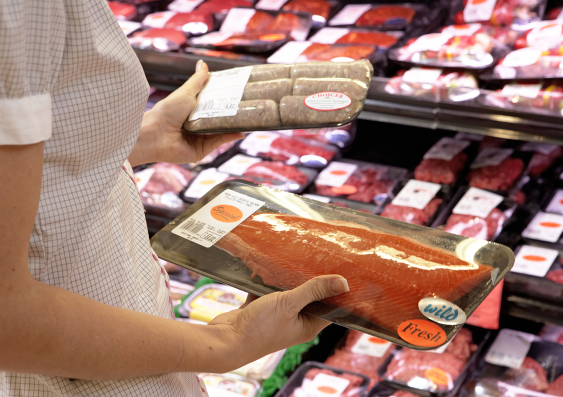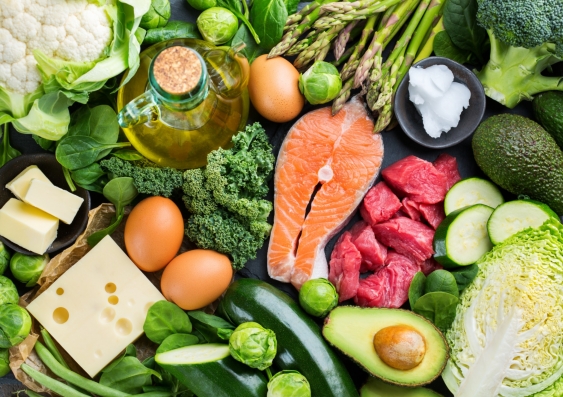Pregnant women should follow advice that reduces the risk of food poisoning, says a UNSW food safety expert.
Thinking of reaching for the brie cheese if you’re expecting a child? Think again.
According to , pregnant women should avoid foods such as soft or semi-soft pasteurised white cheese including brie, camembert, feta or ricotta.
A UNSW food safety expert, Associate Professor Julian Cox, says that exposure to foodborne disease organisms, such as Listeria, is a major risk to a pregnant woman. While other pathogens can also pose a risk, Listeria is seen as the top of the list in pregnancy.
“We can’t be too careful when the potential outcome is so severe,” he says.
“If a healthy adult becomes infected with Listeria, the likely worst outcome is a bad case of ‘gastro’, that may last only a day or two.
“However, the risk for an expectant mother is much higher.”
Media enquiries
For enquiries about this story and interview requests please contact Neil Martin.
Email: n.martin@unsw.edu.au
Listeria and pregnancy
Pregnant women are advised to avoid foods that may lead to contracting Listeria, a foodborne bacterial pathogen. Besides the soft cheeses, the list of foods includes any unpasteurised dairy products, deli meats or sliced or diced packaged ready-to-eat meats, and refrigerated meat spreads including pate.
Also on the list are chilled seafood pre-packed salads and fruits, especially rockmelon, unpasteurised fruit juices, raw seed sprouts, and soft-serve ice cream.
For an average healthy adult, Listeria infection can be asymptomatic, or lead to a relatively mild disease, including gastroenteritis symptoms such as fever, chills, nausea, and vomiting, or flu-like signs and symptoms.
However, the infection can be very serious during pregnancy, as well as for people older than 65 years, and people with a compromised immune system.
In 2018, a national Listeria , traced to contaminated rockmelon, sadly caused the death of five people and one miscarriage.
A/Prof. Cox, from the Food and Health Group in the School of Chemical Engineering, says the organism tends to translocate into the womb and poses a significant threat, particularly to the developing child. While the mother may remain asymptomatic, the impact on the baby can be devastating.
“We see cases where the infection has caused meningitis in the foetus, , as well as listeriosis in the neonate,” he says.
“The biggest problem is the resilience of Listeria. The bacterium can survive and thrive in natural, domestic, and industrial environments where food production, processing and preparation take place.”
He says it’s much more resilient than other traditional foodborne pathogenic bacteria. Due to its psychrotrophic nature, it can grow under refrigeration conditions, unlike many foodborne bacterial pathogens such as Salmonella, which favour growing at body temperature.
“Listeria is a significant pathogen because it can adapt well to restrictive environments, such as more acidic foods,” he says.
“Even in food processing settings, it can easily contaminate various environments, including floors and drains, and complex equipment that may be difficult to clean and sanitise.
“So even if we have, for example, a perfectly safe block of cheese or salami, it can become a risk if exposed to a processing environment, such as grating or slicing, that has become contaminated with Listeria.
“Further, given the ability of Listeria to grow under refrigeration, and this can occur during retail storage, attention should also be paid to use-by dates. A short shelf-life ‘bargain’ may give more than you bargained for.
“This is why so many foods are problematic during pregnancy. But if you’re worried about nutrition, there are safer alternatives. For example, instead of the soft cheeses, consume hard cheese or, simply, pasteurised milk.”
We can’t be too careful when the potential outcome is so severe.
What advice should we follow?
Conflicting advice around food safety can often leave pregnant women confused and vulnerable – especially if the wrong information is given. Pregnancy websites, mummy blogs and social media groups are quick to post their own guidelines around what is safe to eat during pregnancy.
In Australia, Food Standards Australia New Zealand is the agency that sets the national framework on food safety and quality management standards. Guided by these regulations, each state and territory enforces its own food legislation, derived from the federal framework.
This can sometimes mean food safety advice can differ slightly, depending on where you live.
For example, the advises against eating processed deli meats, such as ham, salami, and chicken meat, unless thoroughly cooked to at least 75 degrees Celsius, and eaten soon afterwards. The recommends to avoid cold meats altogether.
“These guidelines are recommended to lower the risk to pregnant women, and the most stringent advice provides for the lowest level of risk,” says A/Prof. Cox.
“However, if women are unsure about what is safe and unsafe to eat while pregnant, they should consult with their healthcare provider.”
Fish, mercury, and safety advice
Fish is typically viewed as a highly nutritious food, and consumption during pregnancy can provide essential nutrients. However, fish, especially from top-of-chain predatory species, can accumulate mercury – another food safety risk during pregnancy.
This can be more problematic in cultures where consumption of fish is a key part of the normal diet.
A/Prof. Cox acknowledges the role culture plays in a person’s eating behaviour. However, regardless of cultural or culinary background, he firmly believes that any food safety advice, based on scientific research, should be taken seriously.
“It comes down to education and a person’s ability to assess risk, which is not always easy among the general public,” he says.
“It can be difficult to navigate between scientifically accurate advice and advice passed down from, say, older relatives. Once again, it’s really useful to seek advice from reputable organisations, or healthcare professionals.
“As with Listeria and alternative foods, instead of saying no to all fish, pregnant consumers are encouraged to find safer alternatives that still provide the right nutrition without the risk of intake of high levels of mercury.”
Back to food safety 101
A/Prof. Cox says we should bring it back to the basic guidelines around food safety.
“Following the food hygiene practices in a commercial setting is so important because we know that Listeria can grow and contaminate the environment and equipment used to process foods,” he says.
“And much the same can then be said about the preparation of food in the home kitchen.
“Work clean, observe good personal hygiene, like washing hands after toileting or handling high-risk foods like raw meats, and remember good food hygiene practices like maintaining cleanliness in the kitchen.
“A handy tip is to use different chopping boards when prepping any meats and fruits and vegetables to reduce the risk of cross-contamination.”
He reminds us of the importance of time-temperature when preparing foods.
“If you’re still worried, cook or reheat your food thoroughly to reduce the risk of any bad bugs surviving or growing,” he says.
“And when you do, remember the danger zone: try to keep foods at or above 60 degrees Celsius or at or below five degrees Celsius. Keep hot foods hot and cold foods cold, and get perishable and cooked foods into the fridge as soon as possible – this will minimise any risk of food becoming unsafe.
“Keeping food well below 5 degrees Celsius greatly slows the growth of Listeria. Still, while it is generally considered safe to consume leftovers within two to four days, in pregnancy restrict that to one day, given the greater risk of listeriosis.”
For further information on food safety for vulnerable people, including during pregnancy, visit the , and for further information for consumers on many aspects of food safety, visit the .







